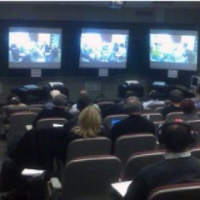Trial Presentation Expert Assistance for Impactful Legal Arguments
Trial Presentation Expert Assistance for Impactful Legal Arguments
Blog Article
Astound the Court: Vital Components of a Powerful Test Presentation
Essential elements such as understanding the target market, crafting an engaging narrative, and understanding spoken and non-verbal communication are vital components of a reliable discussion. As these elements link, they develop a natural approach that not just informs yet likewise engages jurors on numerous levels.

Understanding Your Target Market
Understanding your target market is a pivotal element of effective test presentation. An effective discussion depends upon the capacity to grasp the demographics, values, and proneness of jurors. This comprehension notifies just how arguments are mounted, proof is offered, and sob stories are crafted, ensuring that the message resonates with the jurors on an individual degree.
Research indicates that jurors originated from varied backgrounds and may have varying degrees of recognizing relating to legal procedures (trial presentation). Hence, it is crucial to prevent legal lingo that might estrange or confuse them. Instead, employing clear, relatable language promotes interaction and understanding. Furthermore, recognizing the jurors' potential biases and life experiences allows the trial presenter to expect objections and address issues proactively.
Efficient test presentation also involves observing jurors' reactions throughout the process. Being in harmony with non-verbal signs can supply understanding into their engagement and receptivity, permitting real-time changes in method. Eventually, a profound understanding of the target market not just improves communication yet also constructs connection, boosting the possibility of a beneficial result. Involving with jurors as individuals as opposed to a cumulative unit is important in cultivating a strong connection in the courtroom.

Crafting a Compelling Story
Crafting a compelling narrative is essential in leading jurors via the complexities of a case. A well-structured story not just streamlines complex legal principles however also involves jurors on a psychological level, making the information extra relatable and unforgettable.
This message must reverberate with the jurors' values and experiences, cultivating a connection that goes beyond mere truths. This sequential approach can aid jurors follow the development of events, stressing cause and effect.
Integrating human aspects-- such as personal stories or narratives-- can better enhance the narrative's effect. These aspects evoke empathy, enabling jurors to picture the effects of the case on realities. Furthermore, utilizing a regular motif throughout the presentation reinforces the main argument, making it much easier for jurors to maintain crucial points.
Ultimately, a compelling narrative transforms a trial presentation from a plain recitation of facts into a persuasive tale that captivates the court, urging them to ponder with both factor and feeling.
Using Visual Aids
Incorporating aesthetic help into a trial discussion can substantially improve jurors' comprehension and retention of details. Aesthetic products such as charts, layouts, photos, and videos can change complicated legal principles and proof into conveniently digestible formats. By involving several senses, these aids allow jurors to envision the situation's essential components, making it much easier for them to follow along and comprehend elaborate details.
In addition, well-designed aesthetic aids can stress crucial website link points and highlight relationships between various pieces of proof. As an example, timelines can properly highlight the series of occasions, while annotated pictures can make clear specific information pertinent to the case. This not just help in understanding however additionally strengthens the narrative offered by the attorney.
Excessively intricate or cluttered visuals may overwhelm jurors and detract from the message. Eventually, efficient visual communication can be a powerful tool in persuading jurors and helping them get to informed conclusions.
Mastering Verbal Interaction
Effective spoken interaction is important in a trial discussion, as it serves as the primary methods with which attorneys share their disagreements and connect with jurors. Simpleness in language fosters understanding and aids jurors comprehend intricate problems presented throughout the trial.
In addition, tone and pacing significantly impact exactly how messages are received. A positive tone conveys authority, while ideal pacing enables jurors to soak up info without feeling overwhelmed. Lawyers should likewise differ their vocal inflections to highlight essential points and keep jurors' rate of interest throughout the discussion.
Additionally, the company of verbal debates is necessary. Structuring the narrative logically and coherently assists jurors adhere to the attorney's line of thinking, making it less complicated for here are the findings them to maintain vital details. Making use of persuasive methods, such as narration, can additionally enhance the emotional vibration of the debates presented, thus developing an extra extensive connection with jurors.
Ultimately, grasping spoken interaction not just strengthens an you can find out more attorney's case however also promotes depend on and relationship with the court, significantly enhancing the chances of a positive decision.

Engaging With Body Language
Nonverbal communication plays a crucial duty in trial presentations, frequently communicating messages that words alone can not express. Body language, including gestures, pose, faces, and eye call, considerably influences exactly how jurors view the reputation and sincerity of the presenter. A confident position, with shoulders back and an open pose, can impart trust fund, while closed-off body language might recommend defensiveness or unpredictability.

Faces must show the emotions related to the situation, strengthening the story existing. A genuine expression during an emotional minute can generate empathy and reinforce the emotional appeal. Inevitably, understanding body language is vital for effective test discussions, as it improves verbal interaction and establishes a compelling visibility that resonates with the jury.
Verdict
To conclude, astounding the jury necessitates a critical technique that encompasses recognizing the target market, crafting a compelling narrative, using visual help, mastering spoken communication, and involving through body language. Each element plays a crucial function in creating an effective test presentation that reverberates with jurors on both emotional and intellectual degrees (trial presentation). By integrating these parts efficiently, lawful professionals can dramatically improve their capacity to persuade and affect jury decision-making
Report this page